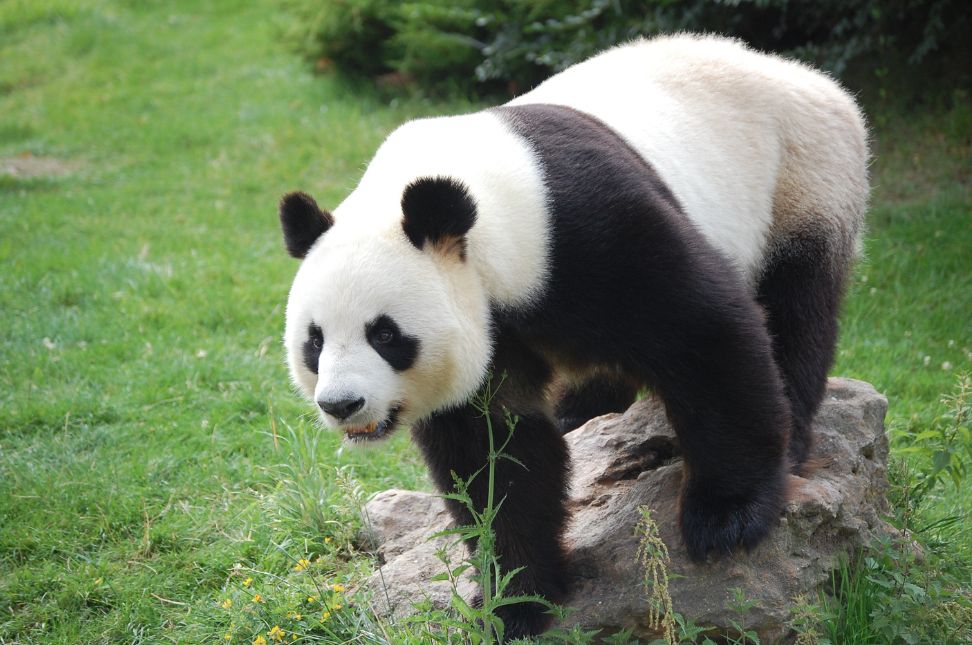Are pandas actually bears? This question has puzzled scientists and animal enthusiasts for decades. With their distinctive black-and-white fur and unique behaviors, pandas have sparked debates about their true classification. To uncover the truth, let’s delve into the world of pandas and explore their taxonomy, characteristics, and the arguments surrounding their classification.
Understanding Taxonomy and Classification
Taxonomy is the science of classifying organisms based on shared characteristics and genetic relationships. In the animal kingdom, species are grouped into hierarchical categories, from kingdom down to species. For a long time, the classification of pandas was uncertain due to their unique traits.
The Giant Panda: A Closer Look
The giant panda (Ailuropoda melanoleuca) is native to the mountainous regions of central China. Known for their black-and-white coat and love for bamboo, giant pandas are a global symbol of wildlife conservation. But are pandas actually bears? To answer this, we need to examine their physical and genetic characteristics.
- Physical Characteristics: Giant pandas share several physical traits with bears, such as a robust body, round face, and large paws. However, they also have unique features, like a pseudo-thumb (an extended wrist bone) that helps them grip bamboo.
- Diet: Unlike most bears, which are omnivores, giant pandas primarily eat bamboo. Their diet is highly specialized, with bamboo constituting about 99% of their food intake.
- Behavior: Giant pandas exhibit solitary behavior similar to other bear species. They mark their territory and communicate through scent markings and vocalizations.
Genetic Evidence
Advancements in genetic research have provided more clarity on the question, are pandas actually bears? Genetic studies have shown that giant pandas are indeed part of the Ursidae family, which includes all bear species. DNA analysis revealed that giant pandas share a common ancestor with other bears, confirming their classification as true bears.
The Red Panda: A Different Story
While discussing pandas, it’s essential to mention the red panda (Ailurus fulgens). Red pandas are often confused with giant pandas due to their name. However, red pandas belong to a different family, Ailuridae, and are more closely related to raccoons than bears. This distinction further emphasizes the need for clarity when addressing the question, are pandas actually bears?
Historical Classification
Historically, the classification of giant pandas was debated. In the early 20th century, scientists were unsure whether to place them in the bear family (Ursidae) or the raccoon family (Procyonidae). This confusion arose because giant pandas share characteristics with both groups. However, modern genetic research has firmly placed them within the bear family, settling the debate.
Conservation Implications
Understanding the classification of giant pandas has significant implications for their conservation. Recognizing them as bears helps align conservation strategies with those used for other bear species. Efforts to protect giant pandas focus on habitat preservation, anti-poaching measures, and captive breeding programs.
Public Perception
The question, are pandas actually bears, also influences public perception. Knowing that giant pandas are indeed bears can enhance appreciation for their unique place in the animal kingdom. It underscores the importance of protecting not just pandas but all bear species, which face similar threats from habitat loss and human activities.
Why the Confusion?
The confusion over whether pandas are actually bears stems from their distinctive traits and specialized diet. Unlike other bears, giant pandas have evolved to rely almost exclusively on bamboo. This dietary specialization has led to several unique adaptations, such as their pseudo-thumb and highly developed molars for crushing bamboo.
Additionally, the name “panda” itself contributes to the confusion. The term “panda” was initially used for the red panda, discovered in the early 19th century. When giant pandas were later discovered, they were named after the red panda due to their shared characteristic of eating bamboo. However, as we’ve established, red pandas and giant pandas belong to entirely different families.
The Importance of Scientific Research
Ongoing scientific research continues to provide valuable insights into the classification and biology of giant pandas. Studies on their genetics, behavior, and ecology help refine our understanding and improve conservation efforts. By answering questions like, are pandas actually bears, scientists can develop more effective strategies to protect these beloved animals.
Conclusion
In conclusion, the answer to the question, are pandas actually bears, is a resounding yes. Genetic evidence and physical characteristics confirm that giant pandas are indeed members of the bear family, Ursidae. Understanding this classification enhances our appreciation of these unique creatures and underscores the importance of their conservation.
As we continue to learn more about giant pandas, we can better protect their habitats and ensure their survival for future generations. By recognizing them as true bears, we can apply successful conservation strategies used for other bear species and contribute to the preservation of biodiversity.
So, the next time someone asks, are pandas actually bears, you can confidently share that yes, they are, and their classification is a testament to the fascinating diversity of life on Earth.




